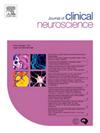A new paradigm for neurodegenerative diseases classification: A clinical perspective
IF 1.9
4区 医学
Q3 CLINICAL NEUROLOGY
引用次数: 0
Abstract
A vast progress has been made in the understanding of neurodegenerative diseases during the past few years. However, clinical diagnostic accuracy continues to be very low, despite the introduction of various diagnostic tools and repeated revisions of diagnostic criteria. For instance, patients with Alzheimer’s disease (AD) may present with symptoms that overlap with other neurodegenerative conditions like dementia with Lewy bodies (DLB), making accurate diagnosis challenging. This diagnostic uncertainty can lead to delayed or incorrect treatment, significantly impacting patients’ quality of life and prognosis. Thus, the definite diagnosis still relies on post-mortem pathological findings, placing a significant burden on both clinicians and researchers. As a growing body of evidence indicates, co-pathology seems to be the rule among neurodegenerative diseases. Additionally, a single pathological diagnosis, such as AD, can manifest in various clinical presentations, ranging from predominantly cognitive impairment to significant motor symptoms. Each of these presentations currently requires its own set of complicated diagnostic criteria. Perhaps, the time has come for a much-needed radical revision of existing clinical diagnostic criteria. Inclusion of patients do not neatly fit into existing diagnostic categories for neurodegenerative diseases, in future large-scale, longitudinal studies and/or clinical trials, and systematic assessment of their clinical features and disease progression using machine learning could generate valuable data on patients with mixed pathologies and improve our understanding of how to effectively treat these complex cases.
求助全文
约1分钟内获得全文
求助全文
来源期刊

Journal of Clinical Neuroscience
医学-临床神经学
CiteScore
4.50
自引率
0.00%
发文量
402
审稿时长
40 days
期刊介绍:
This International journal, Journal of Clinical Neuroscience, publishes articles on clinical neurosurgery and neurology and the related neurosciences such as neuro-pathology, neuro-radiology, neuro-ophthalmology and neuro-physiology.
The journal has a broad International perspective, and emphasises the advances occurring in Asia, the Pacific Rim region, Europe and North America. The Journal acts as a focus for publication of major clinical and laboratory research, as well as publishing solicited manuscripts on specific subjects from experts, case reports and other information of interest to clinicians working in the clinical neurosciences.
 求助内容:
求助内容: 应助结果提醒方式:
应助结果提醒方式:


